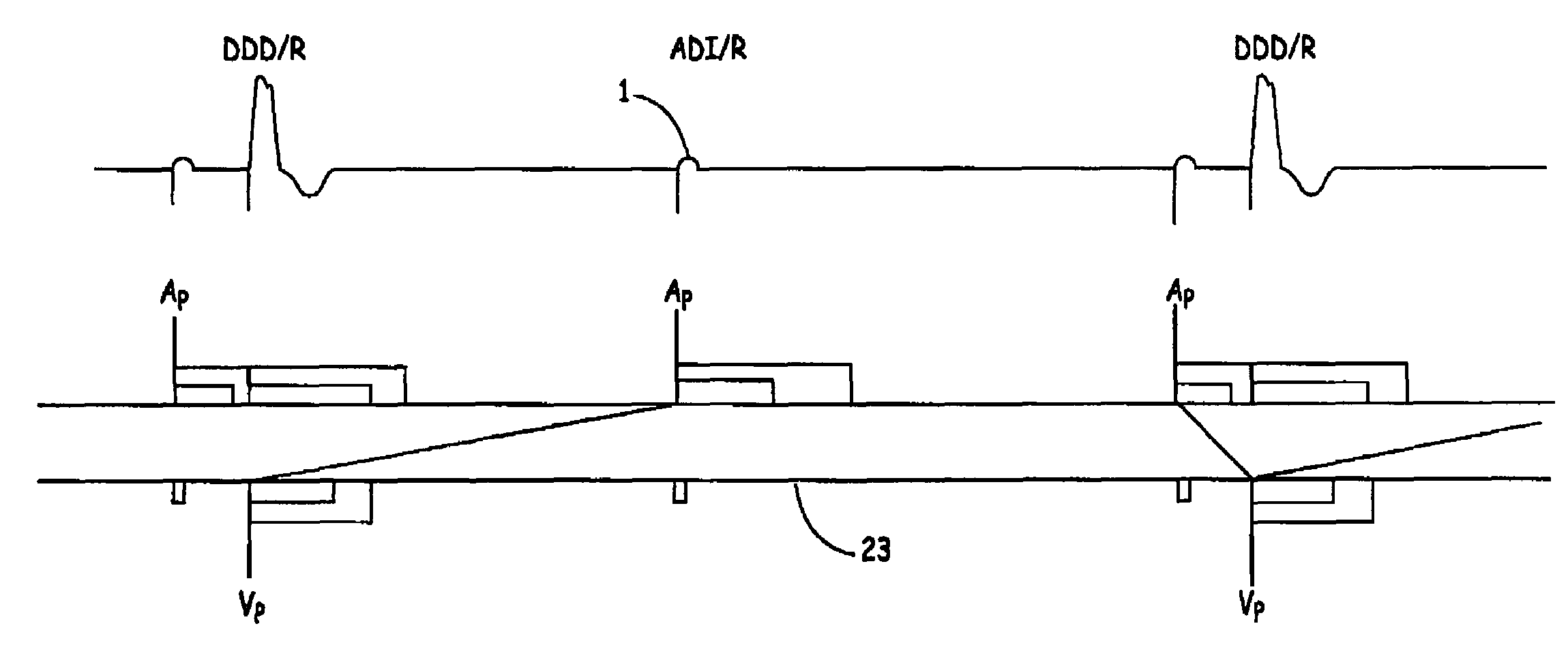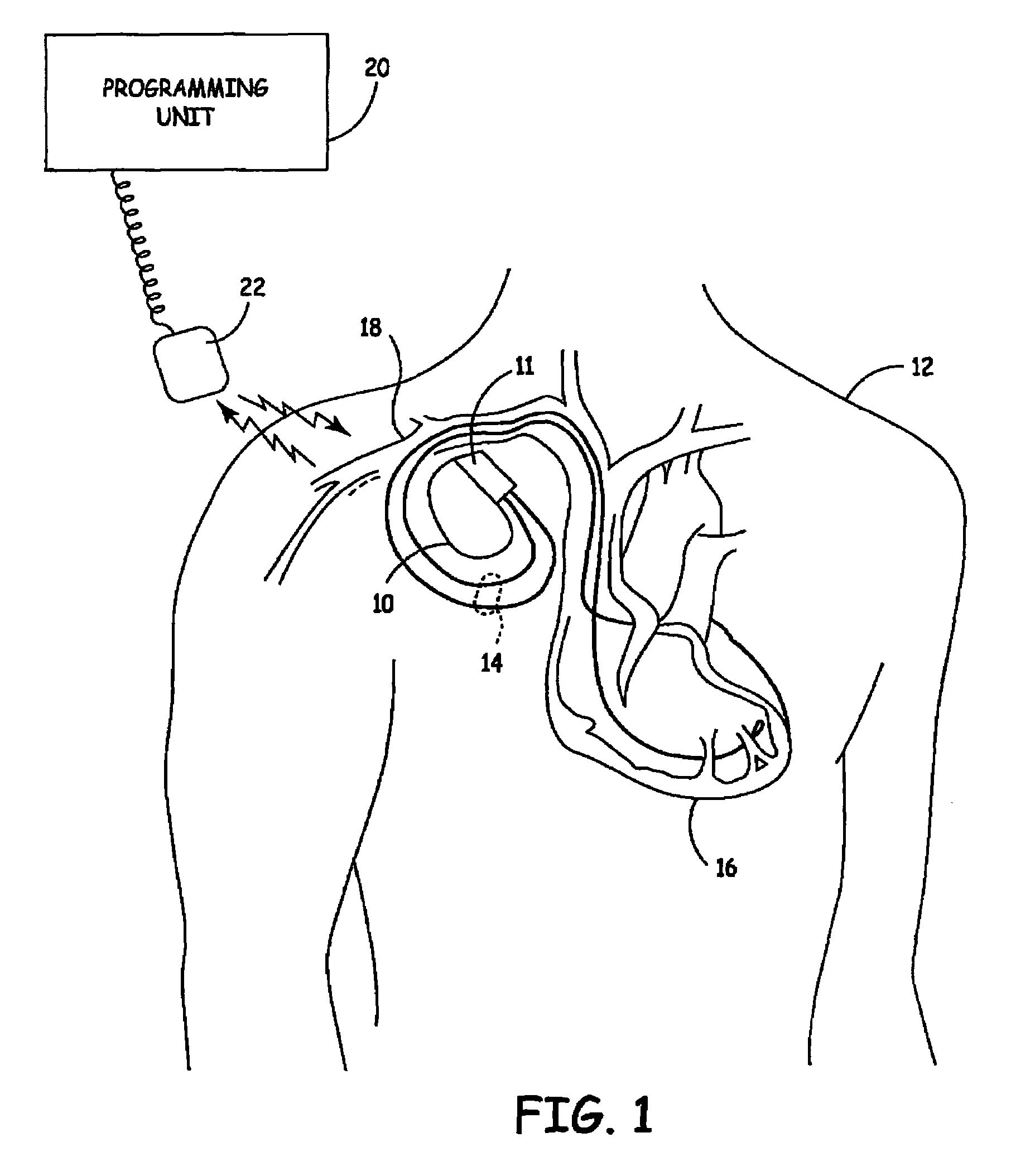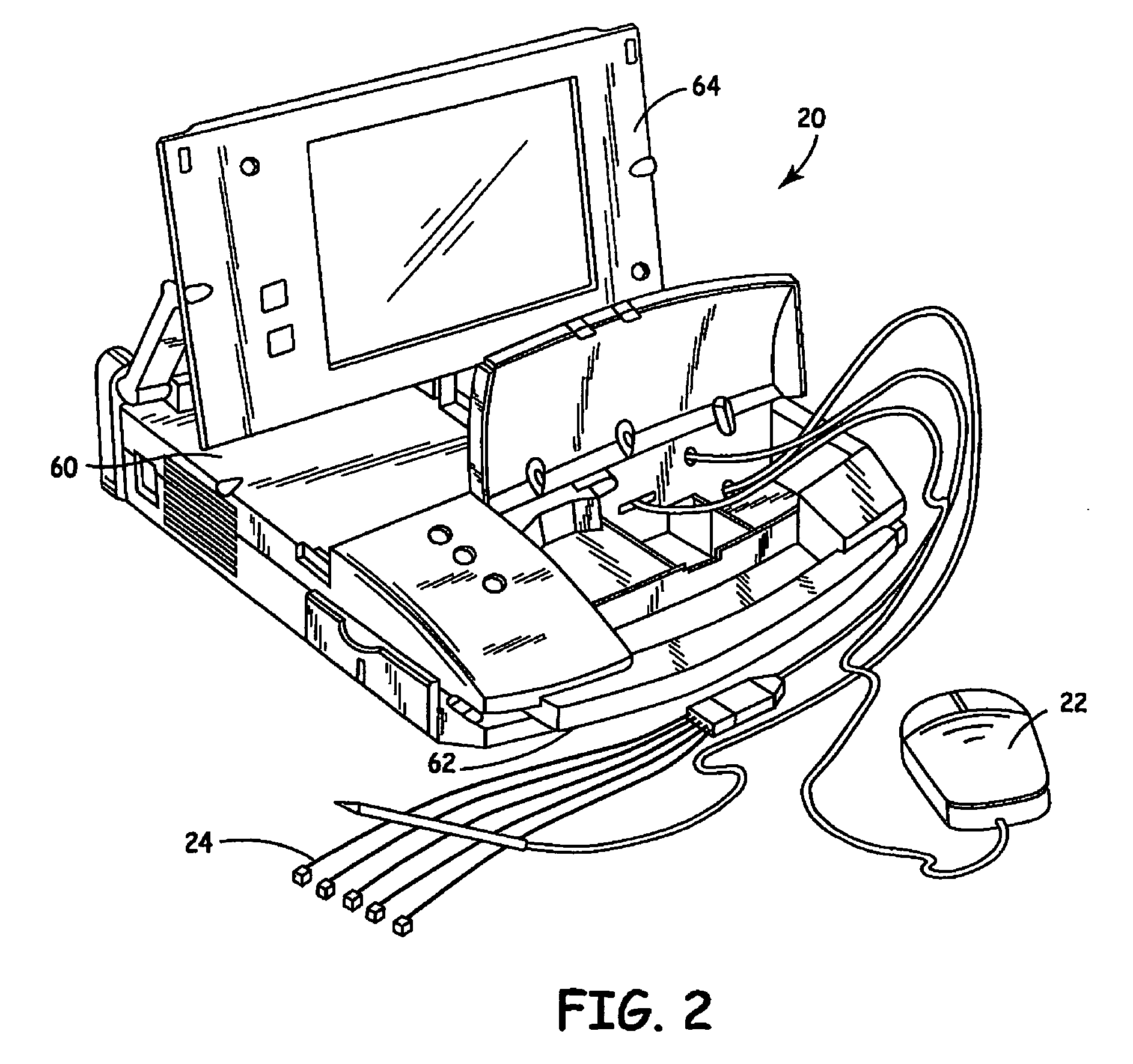Preferred ADI/R: a permanent pacing mode to eliminate ventricular pacing while maintaining back support
- Summary
- Abstract
- Description
- Claims
- Application Information
AI Technical Summary
Benefits of technology
Problems solved by technology
Method used
Image
Examples
Example
DETAILED DESCRIPTION OF THE DRAWINGS
[0045]FIG. 1 is an illustration of an implantable medical device system adapted for use in accordance with the present invention. The medical device system shown in FIG. 1 includes an implantable device 10—a pacemaker in this embodiment—that has been implanted in a patient 12. In accordance with conventional practice in the art, pacemaker 10 is housed within a hermetically sealed, biologically inert outer casing, which may itself be conductive so as to serve as an indifferent electrode in the pacemaker's pacing / sensing circuit. One or more pacemaker leads, collectively identified with reference numeral 14 in FIG. 1 are electrically coupled to pacemaker 10 in a conventional manner and extend into the patient's heart 16 via a vein 18. Disposed generally near the distal end of leads 14 are one or more exposed conductive electrodes for receiving electrical cardiac signals and / or for delivering electrical pacing stimuli to heart 16. As will be apprecia...
PUM
 Login to View More
Login to View More Abstract
Description
Claims
Application Information
 Login to View More
Login to View More - R&D
- Intellectual Property
- Life Sciences
- Materials
- Tech Scout
- Unparalleled Data Quality
- Higher Quality Content
- 60% Fewer Hallucinations
Browse by: Latest US Patents, China's latest patents, Technical Efficacy Thesaurus, Application Domain, Technology Topic, Popular Technical Reports.
© 2025 PatSnap. All rights reserved.Legal|Privacy policy|Modern Slavery Act Transparency Statement|Sitemap|About US| Contact US: help@patsnap.com



